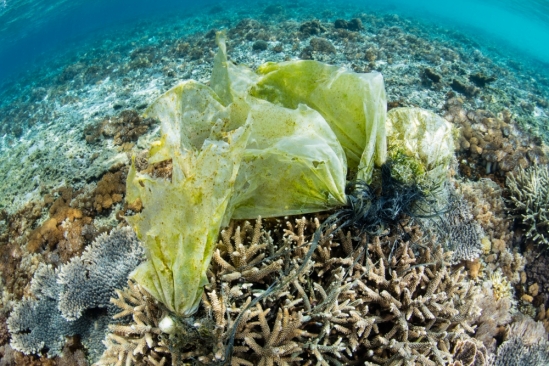Making Humanity’s Impacts on the Ocean Visible
New Maps Give a Picture of the Bigger Picture of Sea Changes

Images of marine life’s battle against plastic pollution have become ubiquitous. As a result, the magnitude of the issue has been made real to the public. But many of the other human impacts tormenting the ocean (like overfishing, warming ocean temperatures, and ocean acidification) are often invisible to us humans. This imperceptibility creates a major obstacle to connecting with the public and, consequently, the policymakers who have the ability to reverse those negative impacts.
Marine ecologist Ben Halpern and the rest of his team at the National Center for Ecological Analysis and Synthesis (NCEAS) aimed to determine how such impacts could be converted into visible ideas in their most recent study. Their hope is that through maps and diagrams, the public may be better able to understand where humans are having the most severe impacts on the ocean and how severely. Their research also looks in to how those impacts may have changed over time, and how recent changes may create new impacts on ocean ecosystems.
Legitimately assessing whether human impacts on the ocean had changed (and if so, by how much and at what rates) depended on research conducted 11 years ago as well as a follow up assessment five years after that. Back in 2008, Halpern and his associates at the time created a spatial model that assessed how 20 separate marine ecosystems had been altered by human actions. The results were clear: none of the areas had been untouched by human influence. Additionally, 41 percent of those areas were experiencing the effects of more than one human impact.

Through their most recent observations, the researchers found that nearly all ocean ecosystems are undergoing increases in “cumulative impact,” and more than half of the ocean “is experiencing significantly increasing cumulative impact.” These results shocked coauthor Melanie Frazier, even though she has been studying climate change and its effects for years. It’s the rate in which impacts are increasing globally that is so daunting, she says.
Frazier also predicts that, at this rate, human impacts on the ocean will only become more visible over time. Visually apparent impacts can be a catch-22 for environmental issues. The media has only been able to cover plastic pollution so thoroughly due to the shear number of readily available examples of plastic pollution tragedies. Footage of a beloved dugong dying from plastic consumption or images of albatrosses with trash practically spilling out of their guts have simply become easy to find. The media attention has resulted in plenty of action — on scales large and small — but only once the public was really able to see and digest the consequence of plastic pollution.
If climate change effects like sea surface temperature increases or ocean acidification were more evident to laypeople, perhaps action to combat climate change would be as fierce as the action to abate plastic pollution. Instead of waiting around for those issues to become glaring, however, maps and diagrams produced by studies like this one may be a better antidote to inaction.




You must be logged in to post a comment.